The Chinese food industry is about to turn from mere suppliers to all-embracing branded service providers, targeting a healthy lifestyle and convenience on an extensive range that is intertwined with food products through the digital possibilities.
Organic and regional produce as well as diets and nutrition plans are new fields of interest for the Chinese population, which is willing to pay more for premium brands and shifting their spending from products to experiences.
During the project period around five months, I was conducting user research and managed Chinese communication, workshops, presentations and documentations, as well as creating prototypes for the final delivery.
Project backgrounds and objectives
Drawing from the knowledge of the changing demands on the European groceries market, Italian Experience design consultancy Experientia supported a Chinese nationwide producer of dairy goods to create new services around their core products. These services included retail and recreational concepts, new product lines and digital services as well as campaigns and package design.
Process
During the project period around five months, we innovated products and services collaboratively with clients through main three phases:
Phase1
Kick-off workshop & Desk research
- Kick-off workshop
- Benchmark research
- Service safari
- Stakeholder interviews
- Point of sales & farm visits
Phase 2
Field research & analysis
- Fieldwork planning
- Field studies
- Findings & insights analysis
Phase 3
Co-creation & prototyping
- Co-creation workshop
- Concept design
- Prototyping
- Service roadmap/ strategic guidelines
Phase 1
Kick-off workshop & Desk research
Kick-off workshop
In order to align clients involved in project tasks and research hypotheses, we hosted the kick-off workshop. Along with several activities such as empathy and stakeholder mapping, a benchmark research, which drives consumers’ selection and consumption of food products and services together with service safari of international food experience innovation was shared to explore key issues. Overall, the workshop comprised four main activities:
- Empathy map
- Benchmark highlights sharing
- Stakeholder mapping
- Brain writing pool
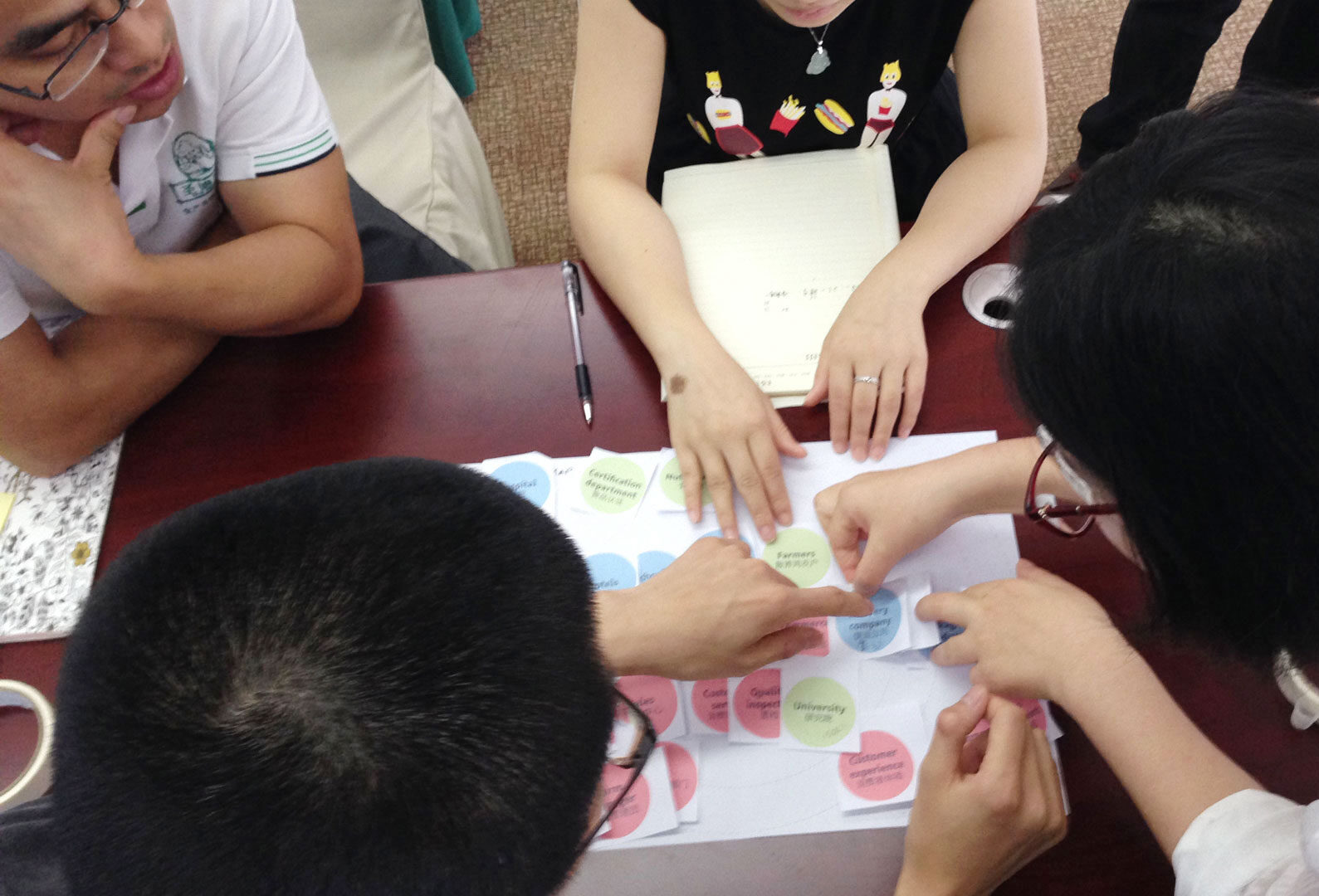
Stakeholder interviews
Understanding the business perspectives was crucial to form design directions. Therefore, we interviewed clients from different units including Special channel, Key account section, Chain section, Quality control, Production centre. We also interviewed the president and the vice president in the headquarter, the chiefs of the China East area marketing department, five star hotel marketing department in Shanghai and distributors located in Shenzhen.
Through these interviews, we grabbed an initial understanding of each of stakeholders’ jobs, concerns, challenges, and expectations, as well as how they co-work and how they are relevant to the other units.

Point of Sales (POS) and farm visit
Additional to the stakeholder interviews, for having more sense about China egg-related markets and the business our clients are really doing, we visited sale points across big chains and private stores and also their main production base.


Phase 2
Field research & analysis
Fieldwork planning & field studies (home walkthrough)
In parallel to data collection for the project directions, I created the study guide for field research execution and the screener, which defined criteria for participant recruitment.
Each field study mainly had four parts: Food diary, interview, home walkthrough and shadowing. The objective was to find out Chinese consumers’ perception of high quality ingredients and how they select, purchase and consume egg products, informing the strategy and directions of experience design such as organic farms, experience stores and multi-channel touchpoints or even B2B opportunities.
1. Food diary

3. Home walkthrough
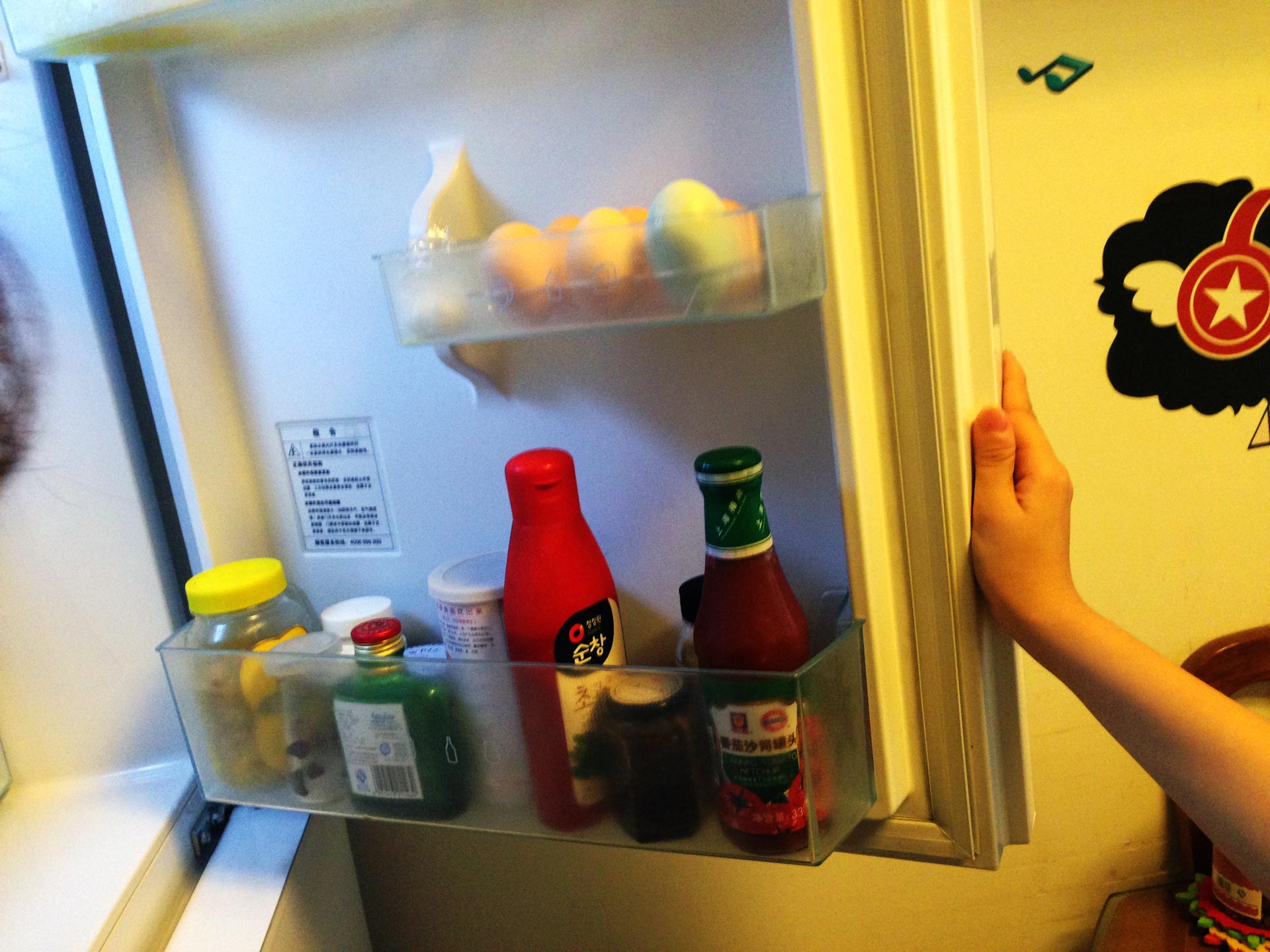
2. Interviews
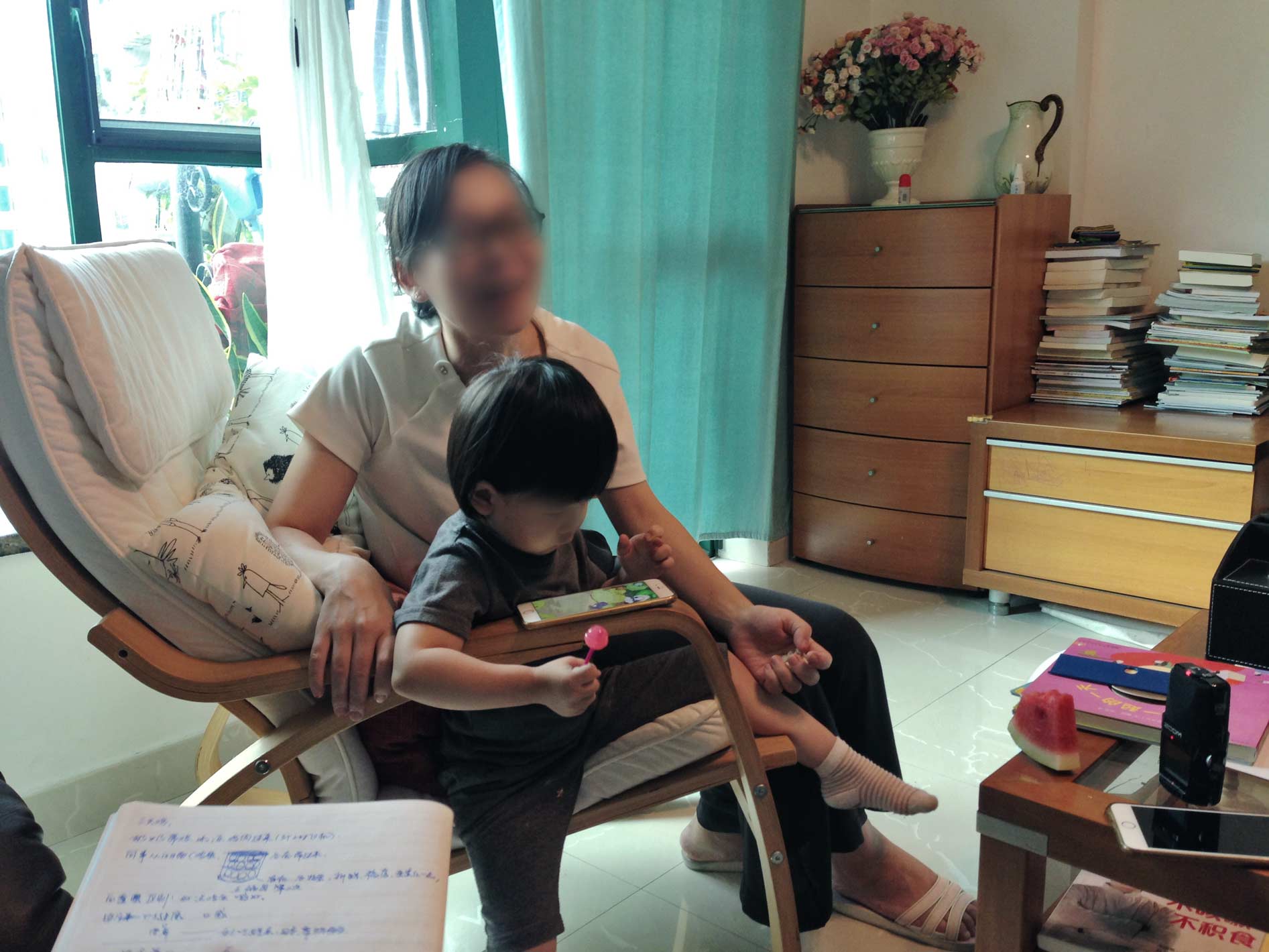
4. Shadowing
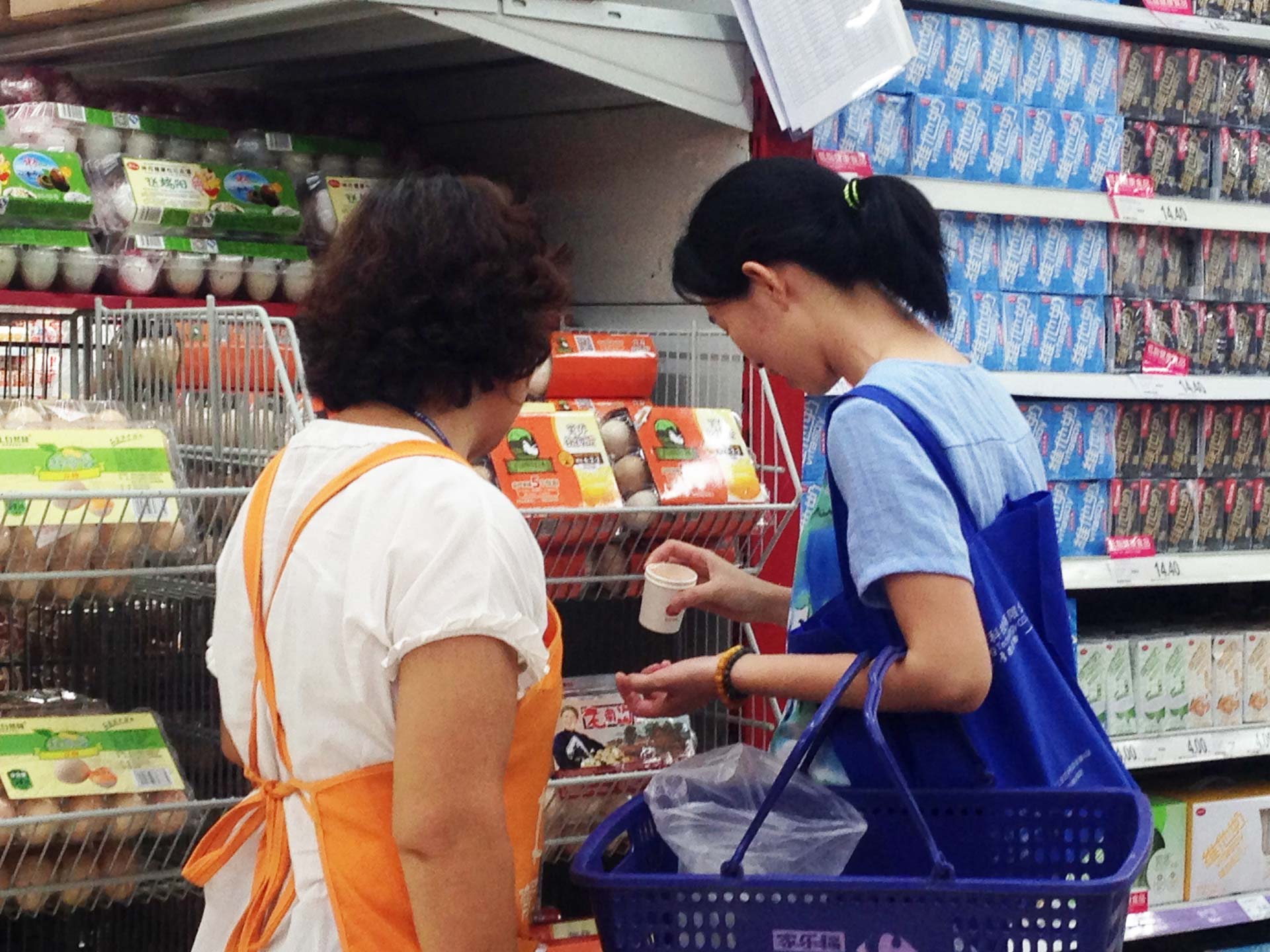
In total, 16 users from three generation families, two generation families and young couples/ singles were visited evenly distributed in Shenzhen and Shanghai, while Shenzhen is the most egg consumed city of China and Shanghai was the high-potential target market.
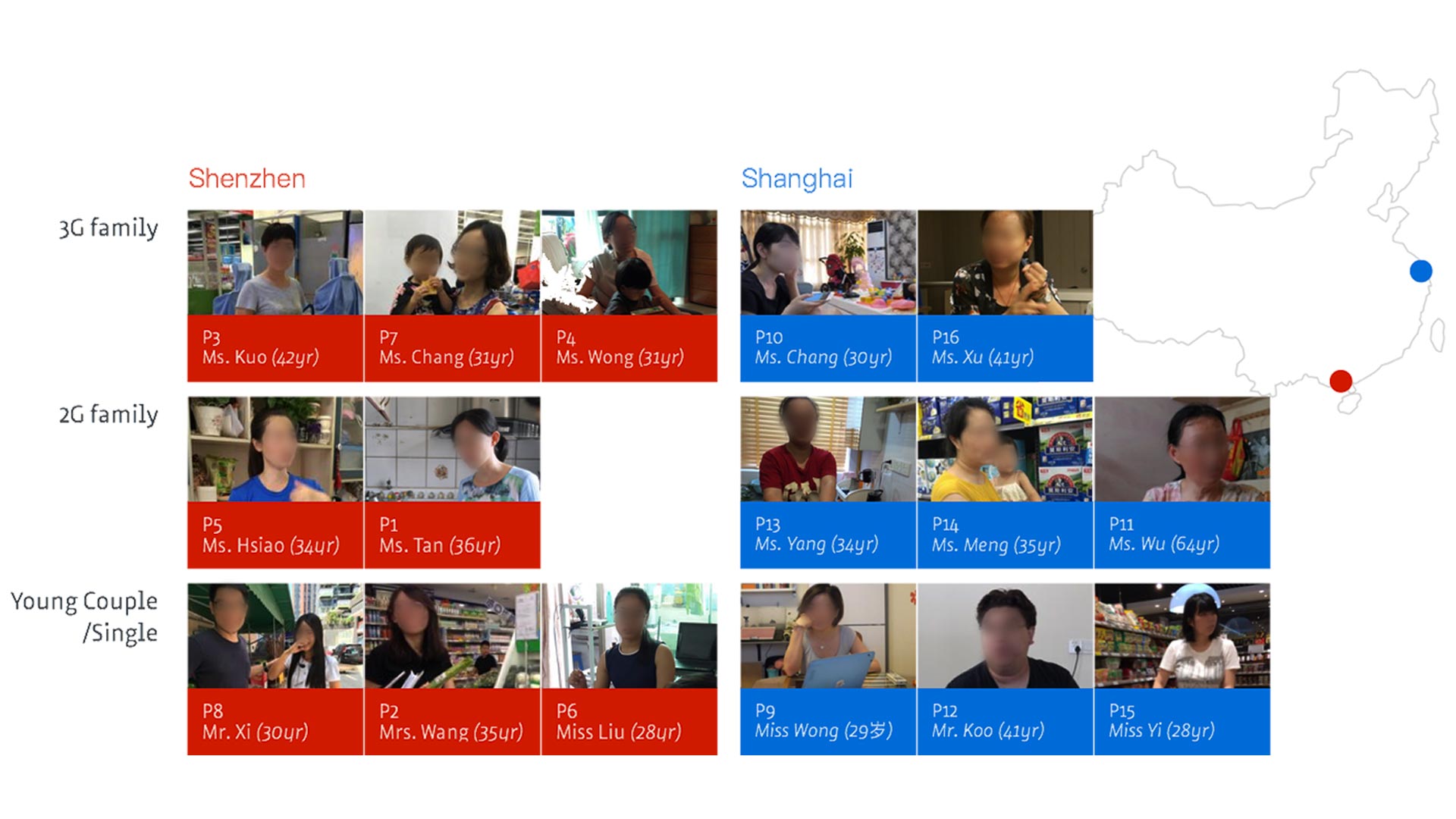
Findings & insights analysis
Between each session of field studies, we did data downloading so as key information and points would be recorded. Soon after all field studies completely executed, we held data analysis workshops in which we collected user data associated to a great number of attributes and also broke down their egg shopping journeys. In the end, we brought out insights consisting of
- Drivers
- Behaviour patterns
- Personas
- Customer journeys
- Opportunity maps
- Idea cards






Phase 3
Co-creation & prototyping
Co-creation workshop
We organised a two-day long co-creation workshop in the clients’ place, through which all insights gathered from the previous phases were put forward to clients for deeper review and discussion. After that, prioritised “Moments that matter” and ideas were addressed for the next step of design conception and prototyping.



Concept design & prototyping
Responding to “Moments that matter”, concepts from the short-term graphic design to long-term communities development were generated. For each concept a prototype was created for further user experience tests.




Service roadmap/ strategic guidelines
As mentioned in the beginning about the goal of the project, clients not only would like to gain innovative concepts, but also were keen to make it happen. Thus, our team designed a roadmap of services, on which a variety of concepts were sorted by years and touch points. The strategic manuals articulating step-by-step innovation were printed and shown to clients as well.

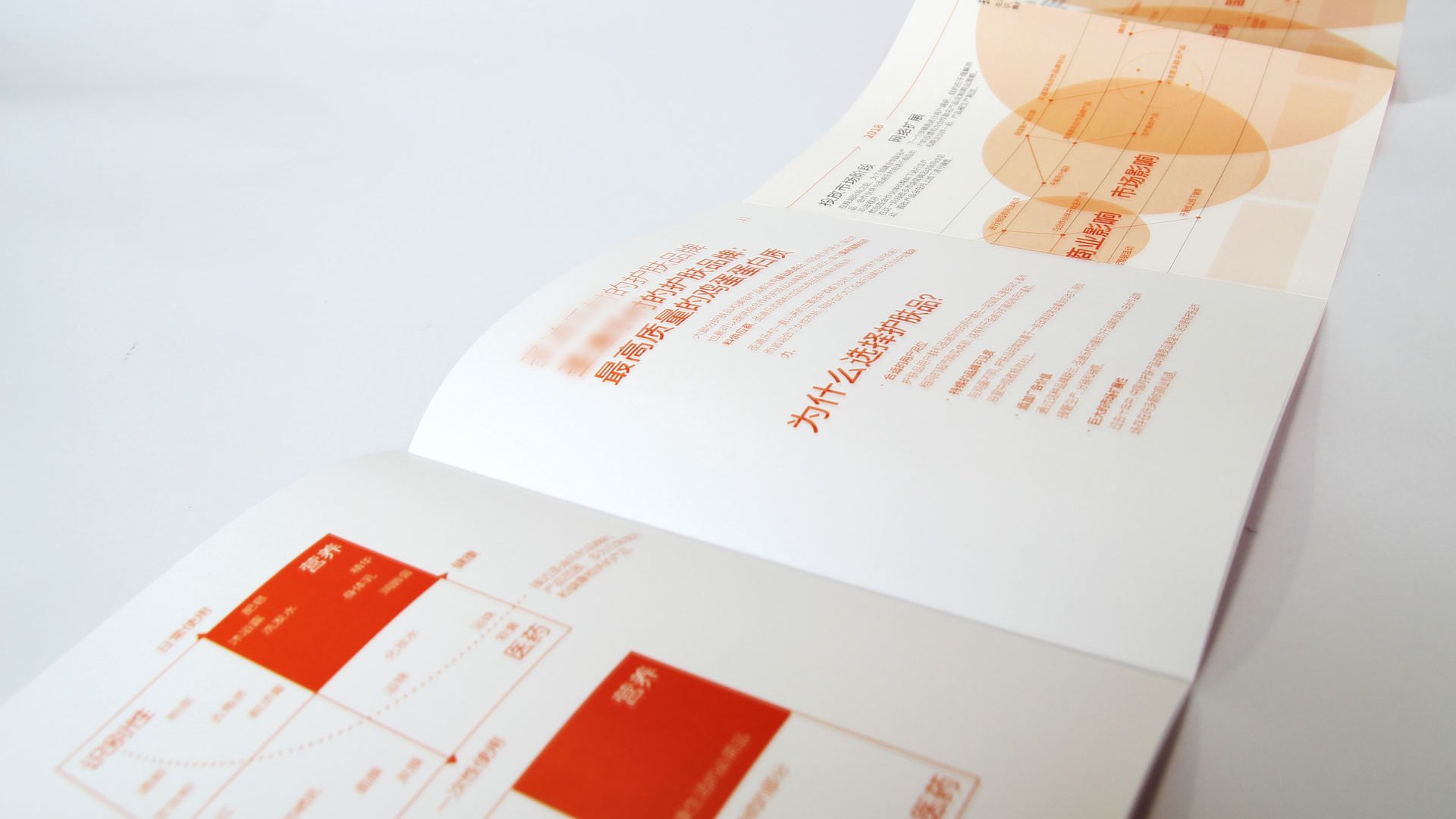
Results and Impacts
Apparently, the clients were highly motivated by us. They actively showed up at the workshops and were engaged throughout the collaborative process. They consequently embarked on innovating visual recognition systems, purchasing new printing machines to implement our design proposals. Besides the brand site was redesigned based on our prototype, one concept targeting children markets in China was also consequently chosen, developed and released on the market in August 2017.



